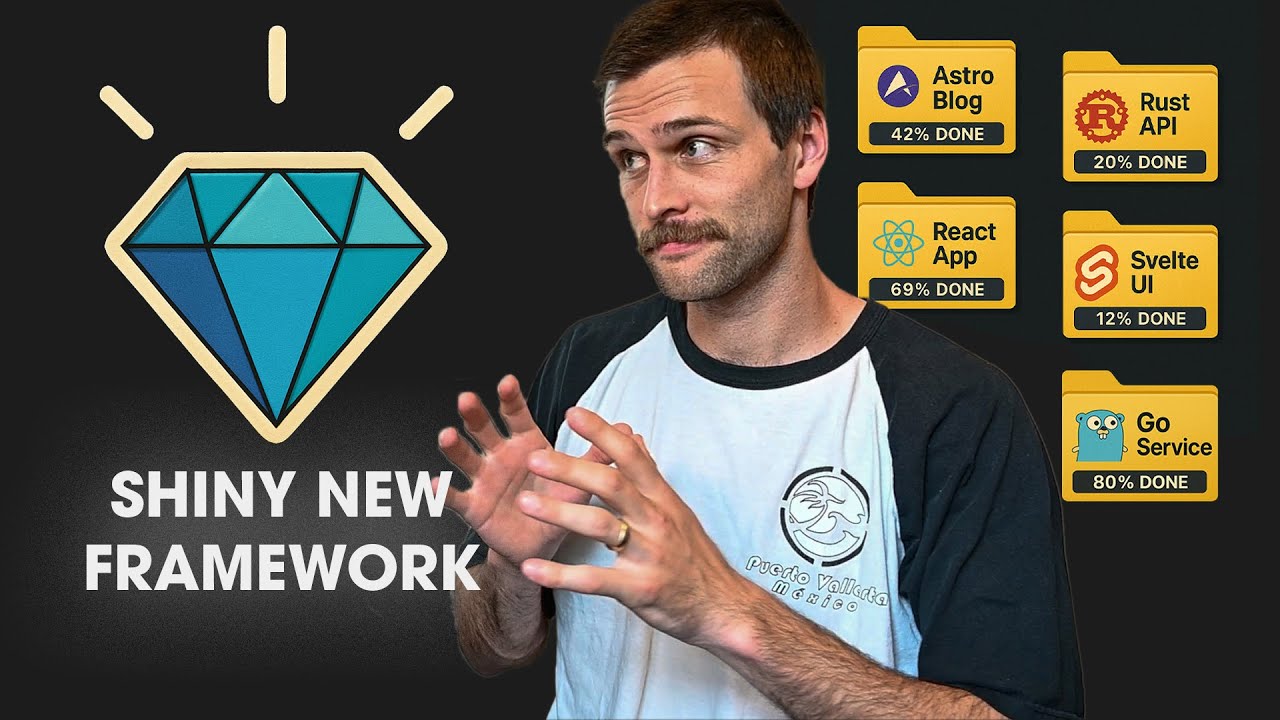The video explains that programmers often struggle to finish projects due to initial excitement driven by dopamine, scope creep, and perfectionism, which lead to burnout and abandonment. It emphasizes the importance of setting clear goals, focusing on minimal viable products, breaking tasks into manageable steps, and using organizational tools to maintain motivation and complete projects.
The video explores why many programmers struggle to finish their projects, often starting new ideas with enthusiasm but abandoning them before completion. It explains that the initial excitement is driven by dopamine, which is more related to the anticipation of reward rather than the actual reward itself. This leads to frequent project starts fueled by the thrill of new ideas, but the lack of sustained motivation causes many to leave projects unfinished, resulting in a “graveyard” of abandoned apps and prototypes.
A major obstacle highlighted is scope creep, where simple projects expand uncontrollably as new features and ideas are added without proper planning. This often happens because developers underestimate how long tasks will take, especially when unfamiliar with certain technologies. The phenomenon, known as the planning fallacy, causes projects to balloon beyond their original scope, making them overwhelming and difficult to complete. The solution suggested is to focus on a minimal viable product (MVP), scaling down features to what is essential for initial release.
The video emphasizes the importance of planning and having clear goals, warning against starting projects without any roadmap or structure. Without a system to track progress, developers can become overwhelmed and lose motivation, especially when working on complex tasks. Cognitive load theory explains that working memory overload leads to burnout, and the goal gradient effect shows that visible progress boosts motivation. Therefore, breaking projects into manageable steps and tracking them helps maintain momentum and focus.
While advocating for some level of spontaneity, the speaker also stresses the need for structure once the initial excitement wanes. They suggest working on projects with a loose plan but then implementing tools like project management software—specifically mentioning Monday.com—to organize ideas, tasks, deadlines, and automations. Such systems help reduce administrative overhead, provide clear visibility into progress, and keep developers accountable, making it easier to finish projects rather than constantly starting new ones.
Finally, the video discusses how perfectionism and fear of judgment hinder project completion. Developers often get stuck refining minor details or refactoring endlessly, driven by self-doubt or the desire for perfection. This self-sabotage is linked to self-handicapping, where overworking or over-polishing prevents release. The speaker advocates for “good enough” work, blocking out negativity and focusing on shipping projects. They conclude that learning through struggle and defining clear goals, scope, and accountability are key to finally finishing projects and avoiding the endless cycle of unfinished ideas.
